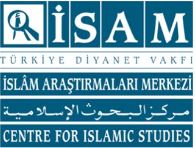Öz
Dede Korkut anlatıları, Türk kültürünün en önemli ve derin anlam katmanlarına sahip eserlerinden biridir. Bu anlatılar, sadece edebî değeriyle değil; aynı zamanda içerdiği toplumsal ve kültürel kodlarla Türk toplum ve kültür tarihi açısından önem taşımaktadır. Bu anlatıların içerdiği değerler sistemi, Türk toplumunun geçmişten günümüze hangi değerler üzerine kurgulandığına ve toplumsal algının köken bileşenlerine ışık tutacak niteliktedir. Türk toplumu için önem taşıyan ahlaki değerler, aile, güven, kahramanlık ve toplumsal sorumluluklar gibi toplumun ortak bilinçaltını oluşturan olguların temelini Dede Korkut anlatılarında bulmak olasıdır. Bu doğrultuda anlatıları pek çok izleğe göre okumak ve çözümlemek olanaklıdır. Dede Korkut anlatılarının sözlü gelenek içindeki işlevi ve Türk toplumunda özne türlerinin oluşmasında üstlendiği işlev, anlatılarda yer alan hüzün ve umut ile ilgili söylemlerin oluşturduğu toplumsal algı üzerinden değerlendirilebilir niteliktedir. Hüzün ve umut, özneyi harekete geçiren temel güdüleyici duygular olduğu için bu değerler üzerinden yapılan bir çözümleme, toplumdaki özne türünün ve toplumsal tutumunun da bir yansımasını sunabilir.
Bu çalışmada dil kullanımlarının ve özellikle sözlü gelenekteki anlatıların söylem gücünü ortaya koymak için Dede Korkut anlatıları örneklem olarak seçilmiş ve hüzün-umut izlekleri çerçevesinde dil merkezli bir göstergebilim çözümlemesi yapılmıştır. Çalışmada anlatılardaki hüzün ve umut göstergeleri; yazınsal göstergebilime özgü sözceleme durumu, söylemsel yapı, anlatısal izlence, özne ve kiplikleri ile göstergebilimsel dörtgen gibi yöntemlerle çözümlenmiştir. Bu çözümleme, Türk toplumunun hüzün ve umuda dair algısının zaman içindeki değişiminin algılanmasına katkı sunarken aynı zamanda bu algının toplumsal yaşam içinde nasıl bir özne türü kurguladığını da göstermektedir. Özellikle hüzün ve umut gibi temel duygulanımların toplumsal yapıdaki bireyler üzerindeki etkileri, toplumsal duygu durumunu yansıtan önemli birer gösterge olarak değerlendirilmiştir. Çalışmanın temel amacı, elde edilen veriler ışığında, Türk toplumunun temel itkisi ile ilgili çıkarımlarda bulunmak ve anlatıların toplumsal yapıdaki özneyi kurgulamada üstlendiği işlevi anlatının söylemi üzerinden yapılan tespitlerle çözümlenmektir. Bu çalışma ile göstergebilimsel bir çözümleme ile anlatıların toplumu şekillendirmedeki etkisine dair bir çözümleme örneği de sunulmuştur.
Anahtar Kelimeler
Kaynakça
- Benveniste, Émile (1995), Genel Dilbilim Sorunları, (Çev. Erdim Öztokat), Yapı Kredi Yayınları, İstanbul.
- Çetinkaya, Gülnaz (2015), “Dede Korkut Hikâyeleri’nde Kültürel Belleğin Söylem Haritası Olarak Giyim-Kuşam ve Yeme-İçme Sembolleri”, Milli Folklor, 27(107), 83-96.
- Deveci, Ümral (2020), “Dede Korkut Anlatılarında Karakterlerin Ruh Durumlarının Beden Dilindeki Göstergeleri”, Edebiyatta Jest ve Mimik, (Edit. Ümral Deveci & Ahmet Akgöl), Kitabevi Yayınları, İstanbul. s. 543-564.
- Ercilasun, Ahmet Bican (2022), Nehir Destan Oğuzname (Oguz Bitig), Dergâh Yayınları, İstanbul.
Öz
The Dede Korkut narratives represent one of the most significant works of Turkish culture, distinguished by their profound layers of meaning. These narratives are important not only for their literary value but also for the insights they provide into the history of Turkish society and culture through the social and cultural codes they encapsulate. The value system embedded within these narratives illuminates the foundational values on which Turkish society has been constructed from past to present, as well as the underlying components that shape social perception. The Dede Korkut narratives offer a rich source for understanding key phenomena that constitute the collective subconscious of Turkish society, such as moral values, family, trust, heroism, and social responsibilities. Accordingly, these narratives can be examined and interpreted from multiple thematic perspectives. The function of the Dede Korkut narratives within the oral tradition, and their role in the formation of subjectivity types in Turkish society, can be assessed through the lens of the social perception generated by the discourses on blues and hope found within the texts. Since blues and hope are fundamental emotional forces that drive human action, an analysis grounded in these themes provides insights into the construction of subjectivity and social attitudes within the broader cultural context.
In this study, the Dede Korkut narratives are selected as a representative case to demonstrate the discursive power of language, particularly within the oral tradition. A semiotic analysis, focused on the themes of blues and hope, is conducted to explore the linguistic and narrative structures at play. The study employs various methods specific to literary semiotics, including the situation of utterance, discursive structures, narrative programme, subject and its modalities, and the semiotic square. This analysis contributes to our understanding of how Turkish society’s perception of blues and hope has evolved over time, and it reveals how these perceptions contribute to the construction of subjectivity within social life. Specifically, the study evaluates the impact of fundamental emotions like blues and hope on individuals in the social structure, positioning them as key indicators of the society’s emotional state. The primary aim of this study is to draw conclusions about the foundational impulses driving Turkish society, based on the data gathered, and to analyze the role of narratives in shaping subjectivity within the social structure by examining the discourse of the narratives themselves. This research also presents a semiotic analysis that illustrates the influence of narratives in shaping societal values and structures.
Anahtar Kelimeler
Kaynakça
- Benveniste, Émile (1995), Genel Dilbilim Sorunları, (Çev. Erdim Öztokat), Yapı Kredi Yayınları, İstanbul.
- Çetinkaya, Gülnaz (2015), “Dede Korkut Hikâyeleri’nde Kültürel Belleğin Söylem Haritası Olarak Giyim-Kuşam ve Yeme-İçme Sembolleri”, Milli Folklor, 27(107), 83-96.
- Deveci, Ümral (2020), “Dede Korkut Anlatılarında Karakterlerin Ruh Durumlarının Beden Dilindeki Göstergeleri”, Edebiyatta Jest ve Mimik, (Edit. Ümral Deveci & Ahmet Akgöl), Kitabevi Yayınları, İstanbul. s. 543-564.
- Ercilasun, Ahmet Bican (2022), Nehir Destan Oğuzname (Oguz Bitig), Dergâh Yayınları, İstanbul.
Ayrıntılar
| Birincil Dil | Türkçe |
|---|---|
| Konular | Yeni Türk Dili (Eski Anadolu, Osmanlı, Türkiye Türkçesi) |
| Bölüm | Araştırma Makaleleri |
| Yazarlar | |
| Erken Görünüm Tarihi | 25 Aralık 2024 |
| Yayımlanma Tarihi | 26 Aralık 2024 |
| Gönderilme Tarihi | 8 Ekim 2024 |
| Kabul Tarihi | 14 Kasım 2024 |
| Yayımlandığı Sayı | Yıl 2024 Cilt: 5 Sayı: 2 |








